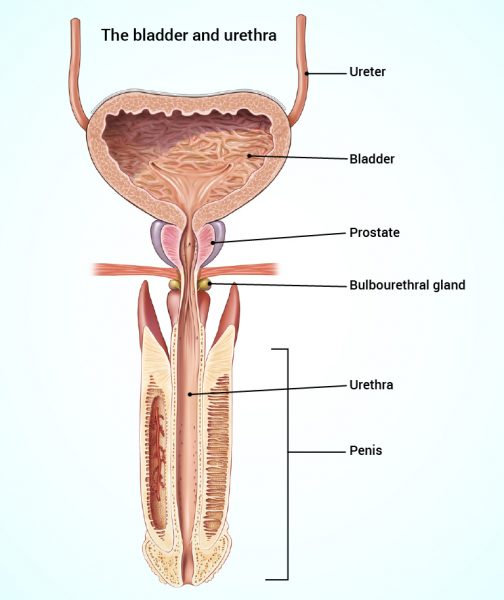The urine that is produced in the nephrons and the collecting ducts is transported through the ureter into the bladder. The ureter contains smooth muscle cells that contract when they are expanded, i.e. when urine fills the tube. Thus the peristaltic movements of the ureter push urine into the bladder. In addition, the ureter is innervated by the parasympathetic and sympathetic nerve cells, but their function is uncertain in that they appear to have little or no influence on peristalsis.
The bladder is a muscular sack which stores urine. The bladder has the capacity to store 800 to 1000 ml of urine, it is not usually that full of urine.
From the bladder urine passes through the urethra. The urethra in women is very short, just a few centimeters, while in men it is up to 20 cm. This is why women are more prone to urinary tract infections than men: micro organisms are able to enter the shorter urethra more easily.
The urethra has two sphincter muscles. The inner sphincter that is not voluntary, but regulated by the autonomic nervous system, opens the urethra when nerve impulses contract the sphincter.
The outer sphincter is regulated by a voluntary mechanism. This allows you to override the internal sphincter and to decide when to urinate.




